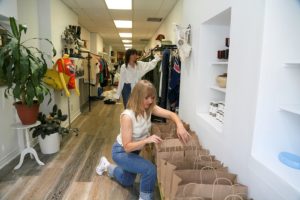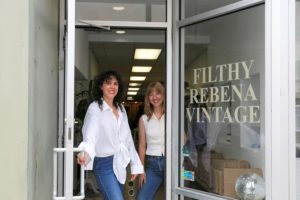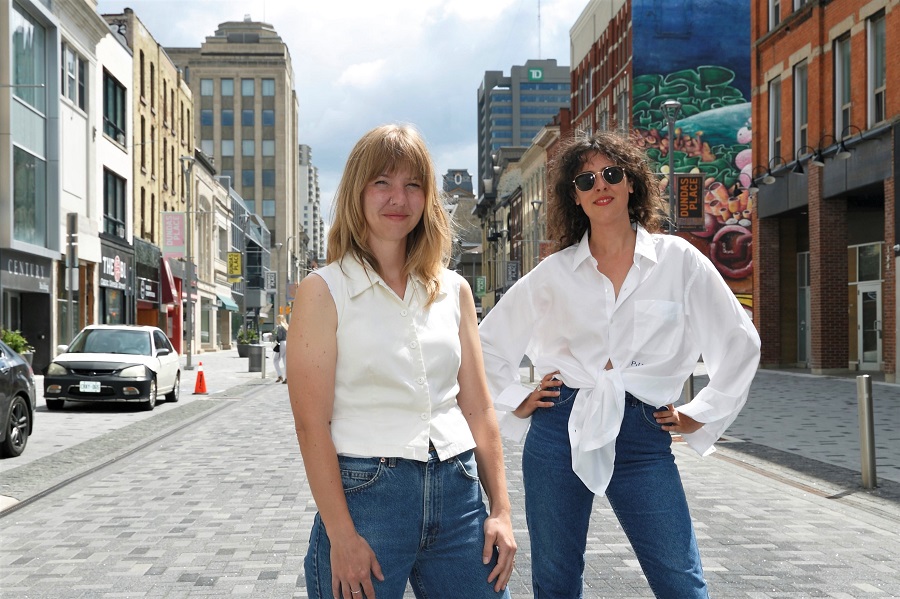Clothes Were the Days
Vintage fashion retailer Filthy Rebena puts flexibility first as it faces new market realities
Photo: Filthy Rebena co-owners Darlene Davis and Natalie Bradshaw
WHEN NATALIE BRADSHAW and Darlene Davis closed the doors to their vintage clothing store Filthy Rebena Vintage in mid-March, Covid-19 forced them back to where they began eight years ago — selling online. But the pair value the customer interaction that occurs in a bricks-and-mortar store, so they welcomed with open arms the ability to reopen, even in a very limited way, in June.
Between mid-March and mid-June, with their four retail staff temporarily laid off, Bradshaw and Davis would meet at the Dundas Street store each morning and work to keep the business going. They posted items on Instagram and the website; they offered curbside pick-up; they did in-city deliveries on Tuesday and Thursdays; and they continued to ship to clients in other cities.
“We had a basement full of stock, so we started by selling what we already had,” says Bradshaw.

Adding to their existing inventory was challenging, since the GTA ‘rag houses’ — wholesale facilities that process used clothing — they normally frequent were all closed. After reaching out to long-standing suppliers, however, Bradshaw says, “We were able to access some through private invitations.”
Bradshaw and Davis were also able to keep a co-op student engaged throughout their storefront closure. They’ve had several students from the fashion design program at Fanshawe College participate in co-op placements at Filthy Rebena, and some have been hired afterwards.
“As an independent store, we can make changes quickly and we don’t have to plan too far ahead” —Darlene Davis
“The majority of our staff are seamstresses. We often upcycle clothing, turning a dated item into something more current,” says Davis.
As an example, Davis cites the lifecycle of a maxi dress: “Shorten it to a midi, then a mini, then cut off the sleeves,” she explains. “Our student was able to set up a studio at home and continue doing that kind of work for us.”
Pre-pandemic, a healthy portion of Filthy Rebena’s sales were to post-secondary students, so the owners were worried when Fanshawe and Western shifted programs online and many students moved back to their hometowns. But happily, notes Bradshaw, “We’ve seen students who were going to schools in other cities return to London, and we’ve also seen a [client] shift. Our biggest demographic now is 25- to 35-year-old young professionals. We have great customers, and they’ve been so supportive.”

With new guidelines in place for retail operations, Bradshaw and Davis have been sorting their way through the myriad of operational challenges facing most retailers, including barrier requirements, how to manage changerooms and the task of social distancing in a narrow, urban shop setting. They’ve also toyed with the idea of opening only on weekends, with a focus on building online sales the rest of the week.
“Downtown has been quite a ghost town,” says Davis. “We’re not sure when we’ll get walk-bys again, and we’re trying to be flexible with how we operate. As an independent store, we can make changes quickly and we don’t have to plan too far ahead.” ![]() Kym Wolfe
Kym Wolfe


